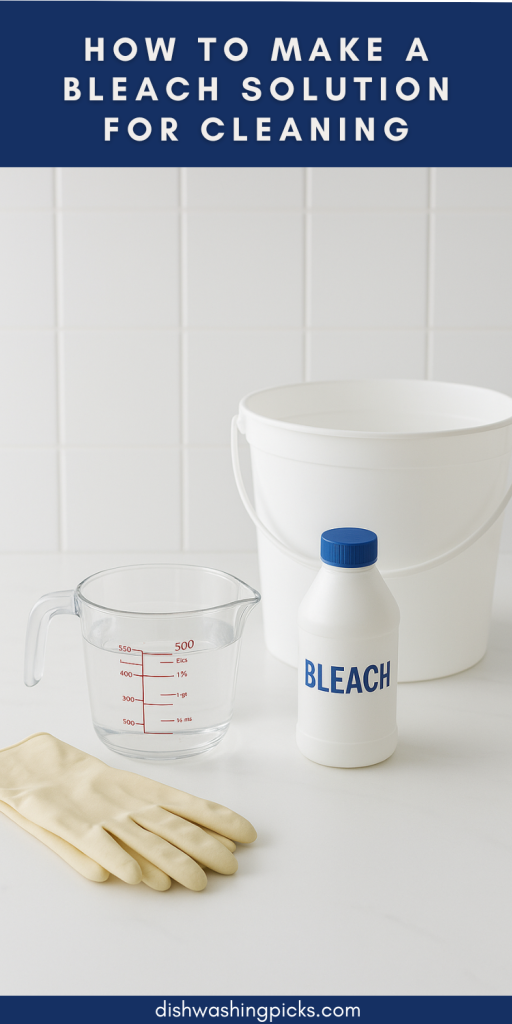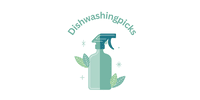
Why Bleach is the Old-School MVP
Picture this: you’ve just finished cooking, and the cutting board smells faintly of garlic and raw chicken. Yikes. Or maybe you’re wiping down the bathroom sink and wondering, “Is this really as clean as it looks?” That’s where bleach comes in—an old-school cleaner that’s been around for decades, tackling germs, stains, and grime like a champ.
But here’s the thing—straight-up bleach is way too strong to use directly on most surfaces. That’s why knowing how to make a proper bleach solution isn’t just handy, it’s essential. The good news? It’s surprisingly easy, and once you know the right ratios, you’ll wonder why you ever bought fancy disinfecting sprays.
Let’s roll up our sleeves and get into it.
What You’ll Need (Spoiler: Not Much)
Before you start mixing, grab a couple of everyday supplies:
- Regular household bleach (unscented is best—skip the lavender or lemon versions, they’re not for disinfecting).
- Water (good old tap water works fine).
- A measuring cup or tablespoon (because “a splash” isn’t a measurement).
- A clean spray bottle or container (preferably plastic).
- Gloves (optional, but bleach can be harsh on your hands).
See? Nothing fancy. Chances are, you’ve already got everything lying around the house.
And here’s a tip: always check your bleach bottle’s label. Most standard bleach has about 5–6% sodium hypochlorite. If yours is stronger (like some concentrated formulas), you’ll need to adjust the recipe.
How Much Bleach to Water?
Alright, let’s get to the part you actually came for. How do you mix it?
- For general disinfecting (think countertops, doorknobs, bathroom sinks):
Mix 4 teaspoons of bleach per 1 quart (4 cups) of water. - For larger batches (like if you want to fill a bucket):
Mix 1/3 cup of bleach per gallon of water.
That’s it—seriously. No rocket science, no overthinking. The key is to measure. Too much bleach, and your house will smell like a swimming pool. Too little, and you won’t actually kill germs.
Quick reminder: bleach solutions don’t last forever. They start losing effectiveness after about 24 hours, so make small batches you can actually use in a day.
Using Bleach the Smart Way
Okay, I know what you’re thinking: “But isn’t bleach kind of… intense?” And yes, it can be, but only if you don’t treat it with respect. Here’s how to play it safe:
- Never mix bleach with vinegar, ammonia, or other cleaners. That’s a chemistry experiment you don’t want.
- Ventilation is your friend. Crack a window or run the fan so you’re not inhaling strong fumes.
- Test surfaces first. Bleach can discolor some materials (wood, fabrics, even certain countertops). Do a little spot test if you’re unsure.
- Use gloves. Your hands will thank you later.
Think of bleach like hot sauce—amazing in the right amount, but you don’t just dump it everywhere.
Where to Use Your Bleach Solution
Now that you’ve got your DIY cleaner ready, where should you actually use it? Here are some tried-and-true spots:
- Kitchen counters and cutting boards (especially after handling raw meat).
- Bathroom sinks, tubs, and toilets (germ central).
- Doorknobs and light switches (those high-touch areas everyone forgets).
- Trash cans (they deserve love too).
Here’s the secret sauce: after spraying your surface, let it sit for at least 5 minutes before wiping it down. That’s how bleach gets the time it needs to actually kill the germs.
Simple, Cheap, and Super Effective
At the end of the day, making a bleach solution is one of those life skills that feels oddly empowering. You don’t need expensive cleaning sprays or products with twenty ingredients you can’t pronounce. Just water, bleach, and a little know-how.
So next time you want to make your home sparkle (and feel confident it’s actually clean), skip the fancy stuff and mix up your own. Your wallet, your inner clean freak, and maybe even your immune system will thank you.
